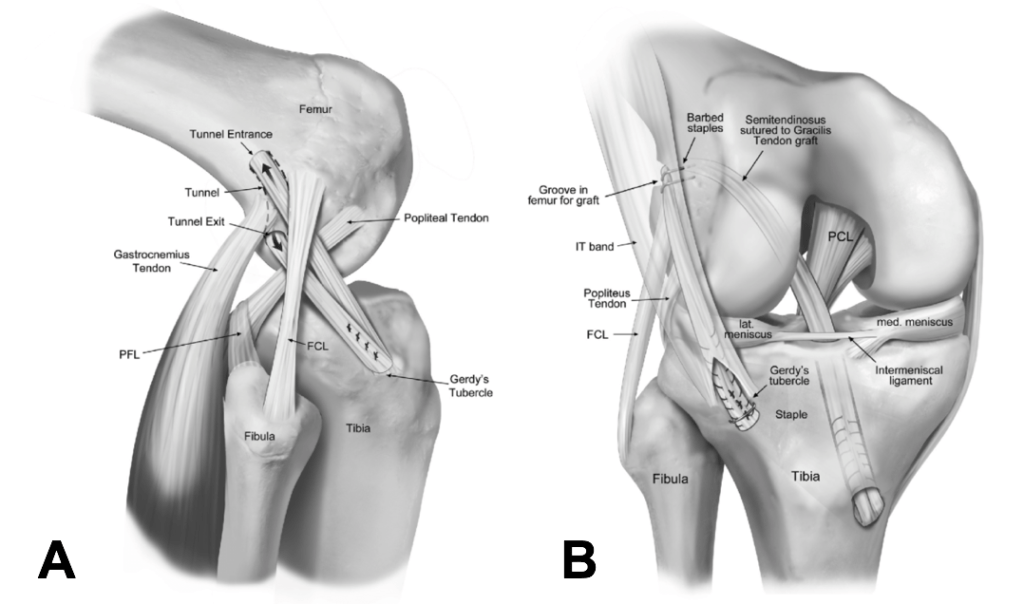ACL injuries impact both athletes and non-athletes in the United States. The ACL is a vital ligament that is located inside the knee joint. It is responsible for providing stability and supporting actions like pivoting, jumping and sudden directional changes. Unfortunately, due to its poor healing potential, ACL Reconstruction or surgery is often required to restore full knee function after a tear.

Image credit: jeremyburnhammd.com
You are able to make an informed decision even if you’ve suffered an ACL injury.
The importance of the ACL and Why Reconstruction is Often Required
The ACL connects the femur (thighbone), to tibia, (shinbone). It is vital in stabilizing the knee joint as it moves. When the ACL is injured, whether from a sudden twist, being thrown off balance, or in intense activities, the knee’s stability is severely diminished. ACL tears can cause inflammation and pain. They may also cause the knee feel as if it “gives out” when you are active.
ACL injuries don’t heal themselves however, they do be treated with rest or rehabilitation in some cases surgical intervention is typically the most appropriate option. ACL surgery is a procedure that involves rebuilding the ACL using a graft or repairing it in a few instances.
What Is ACL Reconstruction Surgery?
ACL reconstruction is the replacement of a ruptured ACL ligament by a new transplant. The graft could be taken from the body the patient or another donor. The patellar and quadriceps tendons (BTB) are two of the most common grafts. Each graft provides unique advantages:
Quadriceps tendon: Due to its strength and strength, as well as the lack of complications at the site of donor the graft can provide reliable stability, particularly for athletes who return to high-impact sport.
Patellar Tendon (BTB): It is often referred to as the “gold standard” in ACL reconstruction This graft is perfect for those who require the highest stability.
Dr. Burnham is a fellowship-trained ACL Surgeon who has performed extensive research on the grafts. The results are exceptional in terms of knee durability and stability.
Advancements in ACL Reconstruction Techniques
Historically, ACL reconstruction methods placed the graft in an unnatural position, meaning it didn’t exactly match the natural position of the ligament. This method often produced less than optimal results, such as decreased stability and a greater risk of re-injury. However, recent advances in imaging technology as well as surgical research have revolutionized the way ACL reconstruction is performed.
ACL surgeons of the present, like Dr. Burnham, use advanced techniques to replace the ACL exactly where it was. This is anatomically precise and is aligned with the knee’s natural mechanics. This improves function as well as stability. The benefits of precision are:
Reduced risk of injuries
Better long-term knee health
The lower the risk of developing arthritis
The focus is on precision: the importance of graft sizing
ACL reconstruction success depends on the right size of the ACL graft. With MRI imaging combined with direct surgical observation, the surgeon is able modify the graft for every person. A graft which is too small may not be able to withstand the strain or a graft that is too big can result in complications. ACL surgeons can improve the healing process and function by tailoring each procedure according to the patient.
Why Choose an ACL Surgeon with a Fellowship Training?
The knowledge of your surgeon is crucial for the success of ACL surgery. A fellowship-trained ACL specialists, such as Dr. Burnham are highly skilled and have vast experience with complex knee injuries. The cutting-edge surgical techniques they employ assure that each patient receives customized treatment, leading to better outcomes.
Benefits of Recovering and Long-Term
Following ACL reconstruction, the majority of patients can anticipate a gradual return to their prior levels of activity if they undergo proper rehabilitation. Physical therapy is a critical element of rehabilitation that helps strengthen the muscles around and restore the full range of motion.
ACL surgery is improving the long-term outcome of patients as they experience lower rates of re-injury as well as improved knee stability. If you’re an athlete looking to return to your sport or someone seeking to regain an active lifestyle, contemporary ACL reconstructive techniques can provide an opportunity to find relief that lasts.
Final Thoughts
ACL reconstruction is a cry from what it used to be, due to modern research, advanced technology and fellow-trained ACL specialists such as Dr. Burnham. Today’s methods are based on precision, personalized care and the most advanced imaging. This gives patients the greatest chance of long-term recovery and knee health.
If you’re experiencing an ACL injury, consulting an expert ACL surgeon can help identify your options and reach the best results for your unique requirements.